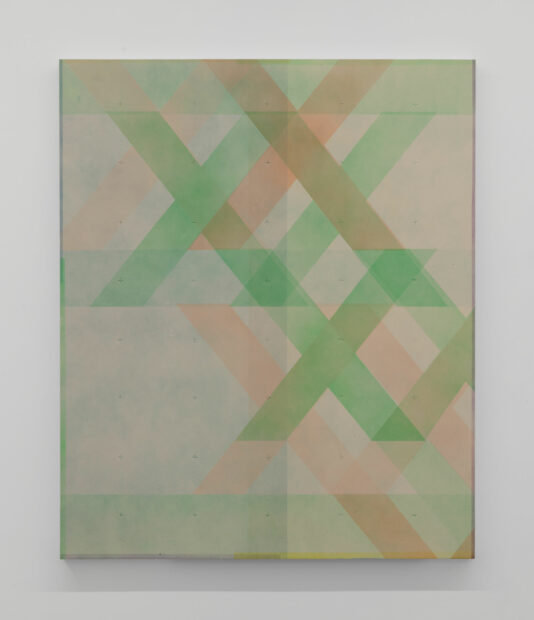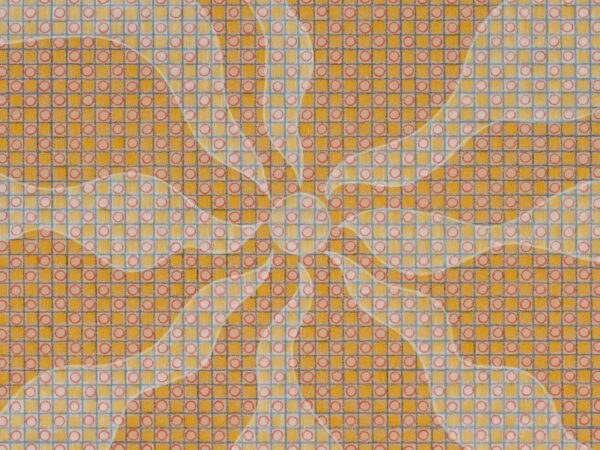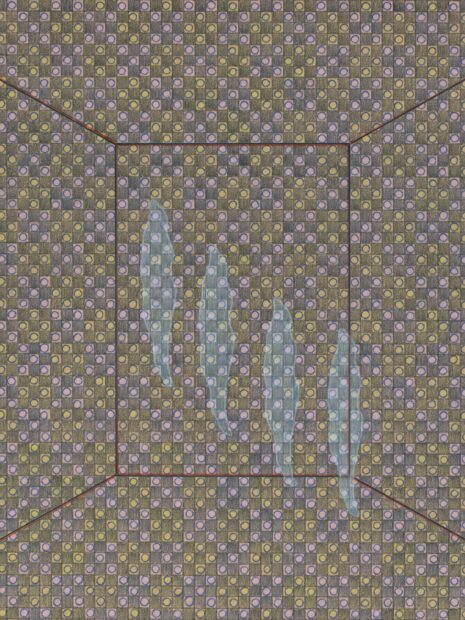In the mid-1970s, a group of American artists began to push against the aesthetic austerity of Minimalism, Conceptualism, and other prominent -isms of the modern art world. The defiant artists of the Pattern and Decoration movement — or P&D, as it’s also commonly known — created intensely ornamental, colorful, and sensual artworks inspired by quilts, rugs, and other sources that were historically connected to (and marginalized as) feminine, craft-based, domestic, and non-Western forms.
P&D artists rejected the fine art world’s narrow definition of value, and seemed to have a whole lot of fun doing it: Miriam Schapiro’s heart-shaped, human-sized ‘femmages’ were encrusted with rhinestones, glitter, and flashy scraps of floral fabrics; Joyce Kozloff’s rainbow textiles and tile works evoke lush, fantastical interiors; and Robert Zakaniten’s massive canvases bloom with enormous flowers and painted lace. Unlike many of their peers, the P&D artists were unabashedly concerned with the pursuit of visual pleasure.
The P&D movement has gotten renewed attention in recent years, including With Pleasure: Pattern and Decoration in American Art, 1972-1985, a major retrospective of its artists at the Museum of Contemporary Art in Los Angeles in 2019. A new exhibition at 12.26 in Dallas takes this MOCA show as a starting point. Something To Do With Pleasure looks for reverberations of P&D in the contemporary art world, presenting works by Claire Colette, Bea Fremderman, Hanna Hur, and Annabeth Marks that echo aspects of the movement’s ethos.
Annabeth Marks is the P&D’s most obvious successor in the show. Her large, punchy paintings are covered by strips of canvas arranged in grids and vibrantly painted. In Sieve II (2023), a background the color of a green-screen is searingly bright beside a warm beige framework of squares. The acrylic paint is thickly matte, but up close we see bits of fabric folded in on themselves and laid out into imperfectly aligned rows. In this sense, her pieces resemble a sort of tender, very human quilt.

Claire Colette, “After the Flood,” 2023, acrylic, ash, salt, resin, incense, flower essences, cedar, dried flowers, iodine and molding paste on canvas, 72 x 60 inches
A sleek set of paintings by Colette also feature a sort of grid. Here, the artist alternates between cross and ‘x’ motifs at large and small scales. Unlike Marks, Colette’s wall-sized pieces are precisely managed, with a color palette and imagery that are decidedly more muted and less tactile. However, her works’ nature-inflected titles and unexpected materials list — which includes elements like ash, salt, incense, flower essences, cedar, and dried flowers — seem to suggest a mysterious connection to ritual that the canvases themselves don’t readily disclose.
Hanna Hur’s colored pencil drawings on paper also inspire a more quiet contemplation. In Spiral iii (2023), it’s unclear whether the small central figure is pulling in energy or radiating it out. Looping lines emanating from the protagonist’s head, arms, and legs equally suggest a moment of extreme concentration or chaos. Either way, Hur’s gridded checkerboard backdrops and hushed, pastel palette give each drawing a sense of careful containment.

Bea Fremderman, “Untitled,” 2023, Depression-era glass and shells sourced from Dead Horse Bay, silver tin alloy
In the next room, Fremderman’s small sculptures are a quiet surprise. Softly glowing through Depression-era glass and seashells, her intimate, lamp-like pieces feel like magical creatures that allow us to admire them while they rest. The artist sources her materials from Dead Horse Bay, a beach and 19th century landfill in New York City. In Fremderman’s hands, the place’s mournful history transforms into something beautiful, recalling the common expression about turning trash into treasure. It’s also something that may well have resonated with P&D artists.
At a time when the world is so urgently demanding our attention, and when we often feel so powerless to do anything to shape it back, this exhibition is a sort of respite. These works don’t insist on a single focal point; pattern allows us to lose ourselves in the images, and in turn, in the moment we’re actually experiencing.
Something To Do With Pleasure is on view through December 9, 2023 at 12.26 in Dallas.




